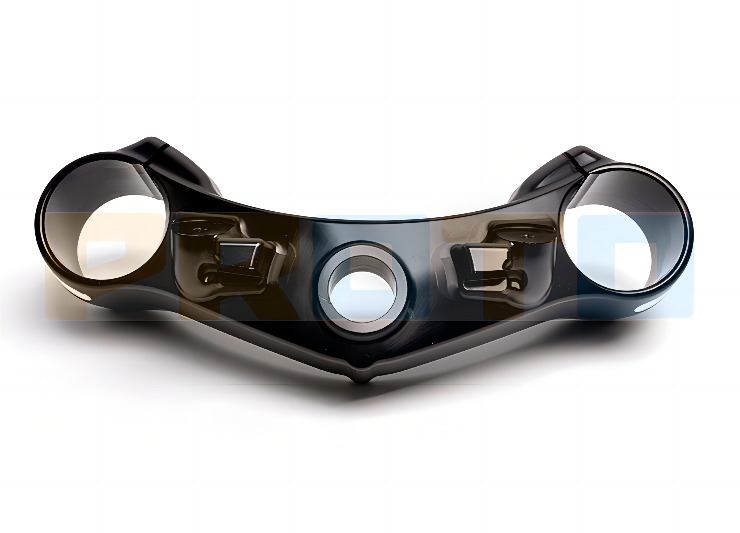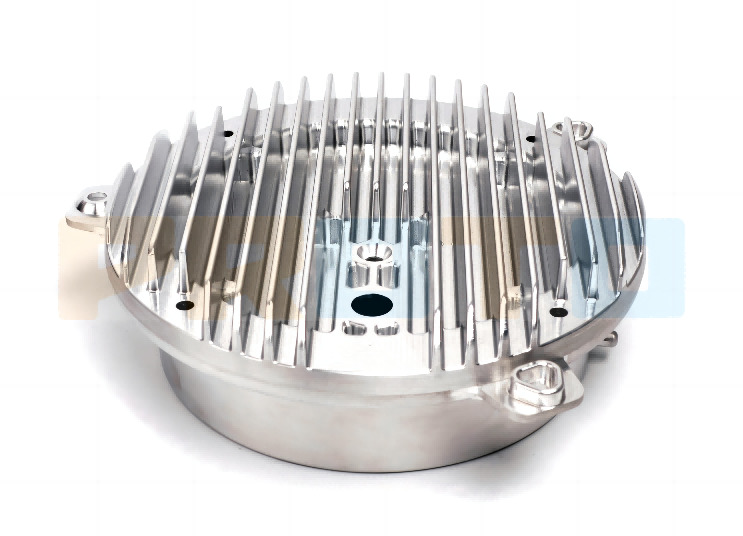Milling has several meanings, most of which relate to circular tool cutting of materials. In particular, the most important definition of milling is the use of generally multi-tooth, rotating cutting tools to “extract” a finished part from a material blank by end and side cutting processes.
Milling includes functionally different methods for achieving particular aspects of the extraction and material removal process, and these are described below:
These methods are used to produce flat surfaces, which can be angled to the horizontal norm by tilting the arbor that drives the tool. Face milling is widely used in manufacturing for achieving precise and smooth finishes on large, flat workpieces, such as engine blocks and metal plates.
Slot milling is the manufacturing technique for producing keyways, grooves, and any other slot format features.
It is commonly used in the production of molds, dies, and components with intricate shapes. Profile milling offers precision and versatility for manufacturing parts with unique and detailed surface geometries. CNC machines are often employed for accurate profile milling operations, as axis cooperation in manual milling is essentially impossible, preventing these machines from generating complex profiles.
Such tools are often termed slitting wheels, and the process is more commonly referred to as slitting.
Gear milling is crucial in industries like automotive and machinery manufacturing, in which precise gearing and high-precision tooth profiles are essential for smooth and low-wear power transmission and motion control. CNC and manual machines are employed for high-precision gear milling/hobbing, to create spur, helical, bevel, and other gear types.
Form milling is common in industries such as: aerospace, automotive, and mold-making to produce complex components and molds with precise shapes. CNC machines are often used for form milling operations due to their ability to precisely control the tool’s movement, enabling the creation of intricate and irregular forms.

What Is Milling?
Metal milling is machining that involves the removal of material from a metal workpiece using a rotary cutting tool. Either the tool or the workpiece or both are moved to create profiles and complex shapes in the cut path.
In metal milling, the workpiece is typically secured to a worktable or fixture, and a cutting tool, such as an end mill, face mill, or drill, rotates at high speeds. The tool makes contact with the workpiece and, as it rotates, its cutting edges remove material, creating the desired features, profiles, and forms. The cutting tool, or part, or both can move along multiple axes, allowing for the creation of flat surfaces, contours, holes, threads, and intricate shapes.
Metal milling is widely used in industries such as: aerospace, automotive, manufacturing, and engineering. It offers the advantages of high precision, versatility, and the ability to work with a variety of metals, including steel, aluminum, brass, and titanium.
Machines used for milling are either multi-purpose and adaptable manual or CNC mills but can be special-purpose fixtures that are integrated into a production line.
What Is the Importance of Milling?
Milling plays a central and irreplaceable role in most manufacturing sectors due to its adaptability and expanding capability set. It allows for the production of precise and repeatable components, meeting tight tolerances and quality standards that can adapt to cost and functional needs. Milling offers the flexibility to create an almost unlimited range of parts with divergent shapes, sizes, and complexities, with few material limitations. It is efficient in reducing material waste, energy use, and processing time when compared with other manufacturing methods. The process can be used with virtually all metals, plastics, composites, ceramics, and many natural materials such as stone, wood, and bone. Milling enables the customization of parts, meeting specific design and engineering needs. Small design alterations during a production run generally involve minor programming alterations and can allow design tuning on the fly. CNC milling machines allow for automated and repeatable production, increasing productivity and consistency. CNC was the earliest form of digital manufacturing automation and remains central to the process. Milling is used for prototyping and product development, allowing for testing and refinement of designs. The benefit of “real” material components at prototype is that full-force and long-duration testing is easier and more precisely reflects the mass-produced product.
What Are the Uses of Milling?
Milling machining is central to the delivery of single, moderate-volume, and mass-production components across essentially all sectors of industry. For example, milling is central to the creation of critical components like: aircraft frames, engine parts, landing gear, engine blocks, transmission components, and chassis parts. It allows fast processing and is extensively used for finishing operations on sand, die, and investment cast components. Milling is used in the precision manufacture of implants, prostheses, and surgical instruments, often using exotic materials and always requiring high precision. The high-volume manufacturing and precision machining of printed circuit boards (PCBs) and connector components is also generally performed on special classes of CNC mills.
How To Choose a Type of Milling?
Selecting the appropriate type of milling process for machining components depends on various factors. For example, for simple components with flat surfaces or straight features, plain milling will often serve well. Complex components with intricate shapes may require more specialized processes like profile milling or form milling. Tight tolerances and high-grade surface finishes are best achieved with precision milling processes such as finish milling or surface milling. This involves fine cuts and low feed rates and results in longer processing times and higher costs.
Consideration of the type of material greatly affects equipment, cutting tool selection, and cutting parameters. Harder materials generally benefit from climb milling for reduced tool wear. For low-volume or prototype production, flexibility and setup simplicity may be prioritized, favoring manual or CNC milling.
What Is the Most Popular Type of Milling?
The most prevalent type of milling for machining parts is by 3+ axis CNC processing. The overwhelming majority of tasks only require 3 or 3 ½ axis machines, which are the most common type. CNC milling has become dominant in fourth-generation manufacturing, due to its numerous advantages.
While CNC milling is prevalent, it’s important to note that manual milling for small-scale or specialized applications is still widely used. Also, more specialized milling techniques like gear milling or thread milling, are still used when the specific requirements of a part call for them.
What Is the Cheapest Type of Milling Operation?
The cheapest milling operation for making parts typically involves manual milling using conventional milling machines. Manual milling relies on skilled operators to control the machine’s movements and tool engagement.
It is cost-effective because it requires a relatively low initial investment compared to CNC milling machines, which are considerably more expensive. This approach is suitable for small-scale production, prototyping, and repair tasks. The choice between manual and CNC milling depends on factors like: part complexity, production volume, and budget constraints.
What Is the Most Expensive Type of Milling Operation?
The most expensive milling operation for making parts typically involves processes that require advanced equipment, tooling, and operator/programmer expertise. For example, utilizing high-spindle-speed machining centers with advanced tooling and cutting strategies for precision and speed can increase machine charges. It is utilized by 30 to 50% but increases throughput to a lesser degree, increasing overall costs. A job that costs $100 manufactured with normal spindle speeds is liable to be around 10-30% more expensive when performed on equipment that supports higher spindle speeds, as throughput is barely altered but equipment costs are increased.
On the other hand, increasingly complex applications in aerospace and medical industries commonly require machines with five or more degrees of freedom for complex, multi-sided machining. Multi-axis machines typically require charge-out at two to three times the rate, but the reduction in additional setups will generally more than compensate for this. Overall, a complex task will generally cost 20 to 70% less when performed on higher-capability equipment, despite higher machine costs. Simple tasks are similarly higher by 2 or more times, through poor exploitation of machine capabilities.
Utilizing the most advanced types of machine and exotic techniques in the tool path can also deliver extremely tight tolerances and high-quality surface finishes. This is common for optical and semiconductor applications. This adds a multiplier of 2 to 3 times, compared with more ordinary precision-level machining of an otherwise identical part. Finally, working with exotic or optical materials, superalloys, ceramics, and composites raises the cost of tooling and expertise, making the process expensive. Exotic materials can increase costs by multiples of 10 to 100 times and more, as material costs can completely overwhelm machine costs even after additional machining difficulty is factored in.
What Type of Milling Operation Is Most Accurate?
The most accurate general milling operation for making parts is typically precision CNC milling, particularly when combined with advanced machining techniques and equipment. The use of higher-precision equipment, more advanced and esoteric tool path planning, and extremely precise cutters can elevate precision and repeatability considerably.
For industries like: aerospace, medical devices, and optics, in which tight tolerances are critical, precision CNC milling is the only practical choice.
What Milling Cutter Has Helical Flutes on Its Surface?
Helical flute cutters have flutes (cutting edges) that spiral around the tool’s axis in a helix form. Helical end mills and side cutters efficiently evacuate chips from the cutting area and are particularly useful in applications in which chip removal and improved surface finish are essential. In particular, the helical form reduces the adhesion and buildup of cuttings behind the tool edge. It also encourages a degree of chip flow along the cutting edge, making them self-clear. The recruitment of cuttings onto the tool has the greatest and most immediate impact on the surface finish, as the cuttings score the freshly cut face.
Helical end mills are available in various configurations, including: square end mills, ball nose end mills, and corner radius end mills, making them versatile for varied milling operations and materials.
Is CNC a Type of Milling Operation?
Not specifically. CNC has come to mean a broad family of machining processes, any of which can be controlled by a computer numerical control system and a G-code program. The overwhelming majority of broad capability machining centers are 3+ axis CNC mills.

Summary
This article presented types of milling in machining, explained each type, and discussed when to best use each type. To learn more about the types of milling in machining, contact a Proto MFG representative.
Proto MFG provides a wide range of manufacturing capabilities, including machining and other value-added services for all of your prototyping and production needs.Visit our website to learn more or to request a free,no-obligation quote.